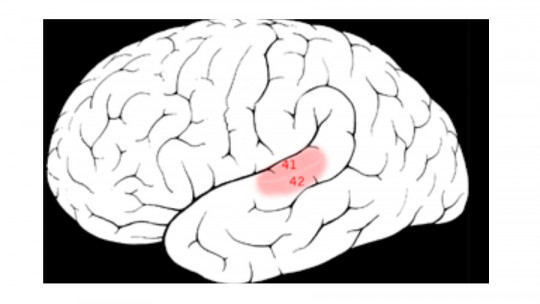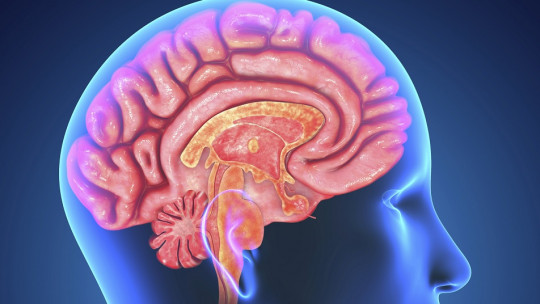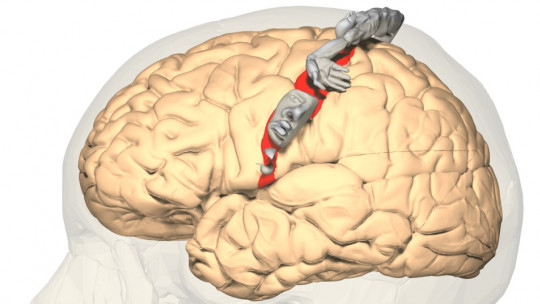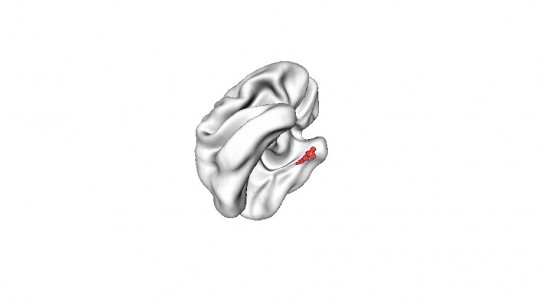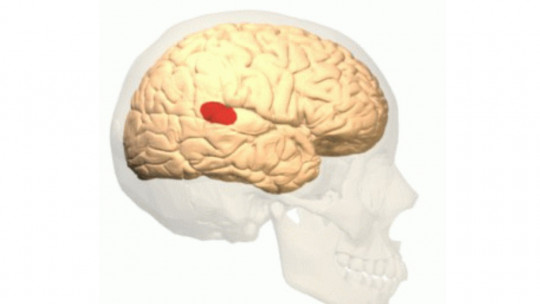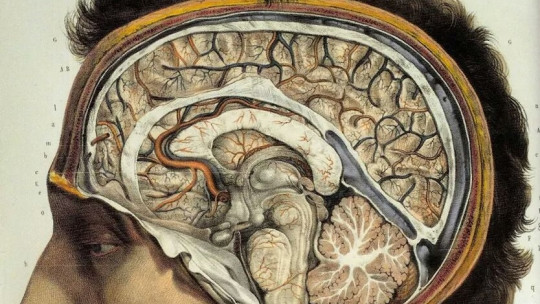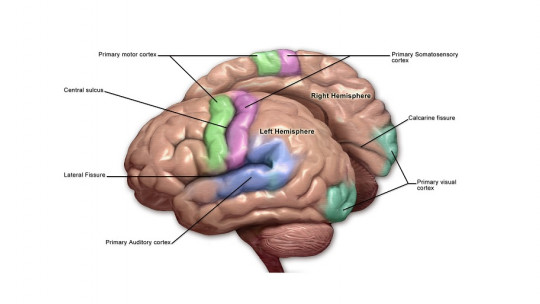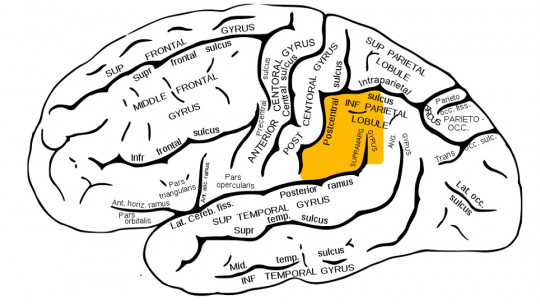The cortex of the brain includes areas specialized in specific tasks. This is the case, for example, of the auditory cortex
We will dedicate the following lines to better understand the function of this part of the brain, its characteristics and most important regions. Likewise, we will see what other parts of the nervous system and the human organism it is connected to in order to fulfill its functions.
What is the auditory cortex of the brain? Location and features
The auditory cortex of the brain is a part of this organ responsible for processing all the information that we obtain through the auditory system, that is, the sounds that the ears capture. Its location is in the temporal lobe and within this area we can find it in the so-called Heschl area, formed by the transverse gyri.
Another way to find this region is by going to the map of the former Brodmann areas, since The auditory cortex of the brain would occupy parts 41, 42 and a part of 22 , within this map. This region of the cerebral cortex can be found both in the brains of humans and in the brains of a large number of vertebrate animal species.
Parts and structure
In terms of structure, the auditory cortex of the brain can be subdivided into primary (A1), secondary (A2) and tertiary (A3) auditory cortex. The primary has a thickness of approximately 3 millimeters. At a macrostructural level, we have already seen that it is located in the Heschl area, occupying half of that entire area.
If we go to the microstructure, we can find several ways to study this part of the brain For example, at the level of neuronal arrangement or cytoarchitecture, part A1 would form part of the so-called koniocortex, a group of neurons with a granular appearance. The auditory cortex of brain A1 has several layers, showing greater density in numbers II and IV. As for III, it is characterized by the existence of pyramidal type cells.
If we focus on the chemical composition, or chemoarchitecture, we will discover that zone A1 is largely composed of CO, cytochrome oxidase, and AChE, acetylcholinesterase. Finally, the distribution of myelin, or myeloarchitecture, denotes large concentrations of this substance in the primary part precisely where more sensory projections occur.
Precisely because of this great myelination, the auditory cortex of the primary type brain (A1) can be easily observed using magnetic resonance imaging.
In the case of primates, and more specifically in humans, We can divide this zone, from the most central to the most peripheral, as core, inner belt and outer belt The nucleus would house the A1 section and also the rostral or R part. The inner belt would house the secondary auditory cortex of the brain, that is, area A2. Finally, the outer strip is the place where we would find the tertiary section, or A3.
The auditory cortex of the brain is part of the so-called neocortex. This area is characterized by the need for a certain stimulation during development in order to correctly develop all functions. In this sense, for the auditory cortex to carry out its tasks normally, it will have been necessary for it to have been exposed to different auditory frequencies in the early stages of the organism’s life.
Functions of the auditory cortex of the brain
The function of the auditory cortex of the brain, as is evident, is to process the data captured by the auditory system. If this part of the brain did not do this work, even if the ears functioned correctly at a structural level, we would have no way of being able to use the sense of hearing, since there would be no reception and interpretation of the sounds captured by said system.
For this reason, some brain injuries due to trauma, diseases, brain infarctions or tumors that damage this area can cause functional deafness, regardless of whether the ears are not affected. However, even if the sounds cannot be interpreted, these subjects still show reflexive behaviors to some of them.
The explanation for this phenomenon is because, before reaching the auditory cortex of the brain, there is a first processing of the information that takes place in the brainstem and the midbrain.
Besides, Each group of neurons in the auditory cortex of the brain is specialized in processing sounds belonging to a certain frequency In this way, it can be seen that, starting from one end, the neurons that process low frequencies (from 2 Hz) are located and as we move towards the other end of this cortex, the nerve cells process the higher frequencies, until reaching 128 Hz.
Due to this phenomenon, there are frequency maps or tonotopic maps that indicate exactly which area of the auditory cortex of the brain is dedicated to specific sound frequencies. This region of the brain, by interpreting the data obtained by hearing, It is able to locate where sounds come from and also identify and classify them
It is not yet known in depth how this part of the brain is capable of carrying out this activity with such precision, since identifying the continuum of a specific sound, ignoring the rest of the noise that is constantly perceived, is something extremely complex. One theory is that the key is in the spatial location of the sound source, but when it varies constantly it is not a problem for the auditory cortex of the brain, so there must be another explanation.
In turn, the auditory cortex of the brain is able to discern between different tonalities, harmony and synchronization of notes This facet is observed very well in terms of musical interpretation and how we are able to distinguish each sound, coming from a whole range of instruments, and interpret them all together.
We have already seen that the auditory cortex of the brain was divided into three parts (primary, secondary and tertiary) and that it is also structured neurally by the type of sound frequencies they manage. Besides, Zone A1 also has connections with other regions of the nervous system such as the thalamus and more specifically with the area of the medial geniculate nucleus.
It is believed that this part is one of those responsible for the interpretation of the volume of the sound and also the perceived tones.
Types of dysfunctions in the auditory cortex
There are different pathologies that can be caused by injuries or abnormalities in the auditory cortex of the brain.
We have already mentioned previously cortical deafness, which occurs when the A1 area is damaged and therefore the individual cannot process the sounds that their ears are hearing correctly.
If the lesions, on the other hand, are affecting the secondary or tertiary area, there are other pathologies that the subject can develop. For example, if the damaged area is in the right hemisphere, this person might have problems recognizing the pitch of sounds, known as amusia It could be that she had difficulty intoning the sentences correctly. In this case, the condition would be called dysprosody.
It could even be affecting other sensory regions, for example those that have to do with visual memory. If the injury affects the left hemisphere, there are other possibilities that we find. The best known are aphasias, which have to do with difficulties understanding or using language. One of them is Wernicke’s, which prevents him from understanding and repeating the words he is hearing.
Another common aphasia is anomic, in which the person who experiences it has problems remembering the name of an element There could also be another aphasia known as transcortical sensory, which also affects language comprehension. The last of the possible aphasias is acoustic and amnesic conduction, which would cause problems repeating a sequence of words.
Likewise, with lesions in the auditory cortex of the brain of the left hemisphere one can also suffer from amnesia for verbal elements , which would also be making it difficult for the person to speak. The amusia that we saw in the other hemisphere can also occur here, also related to auditory agnosia, the inability to process the stimuli received through the ear, in this case.
But it may happen that the injury or disease has affected the auditory cortex of the brain of both hemispheres of the brain, which would mean a bilateral condition. In this type we can find that auditory agnosia that we were talking about and also verbal deafness, that is, being unable to process the words that the ears are hearing.

